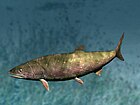
Perleidus is an extinct genus of ray-finned fish from the Triassic period. Fossils have been found in the Middle Triassic of Italy, Switzerland, and China. The inclusion of Early Triassic species in the genus Perleidus was questioned.

Jurong is a county-level city under the administration of Zhenjiang, Jiangsu province, China.
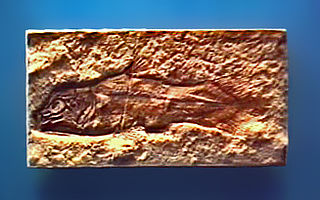
Laugiidae is an extinct family of prehistoric lobe-finned fishes which lived during the Triassic and Jurassic periods. Their fossils has been found in Canada, China, Germany and Greenland.
Stensionotus is an extinct genus of prehistoric bony fish that lived during the Early Triassic epoch in what is now Madagascar and China. It belongs to Parasemionotidae together with Albertonia, Candelarialepis, Jacobulus, Lehmanotus, Parasemionotus, Qingshania, Suius, Thomasinotus and Watsonulus. It is named after Erik Stensiö.
Boreichthys is an extinct genus of prehistoric bony fish that lived during the Late Triassic epoch in what is now Franz-Josef Land, Arkhangelsk Oblast, Russia.

Pteronisculus is an extinct genus of prehistoric ray-finned fish that lived during the Early Triassic and Middle Triassic epochs of the Triassic period worldwide.
Agecephalichthys is an extinct genus of prehistoric freshwater bony fish that lived during the Anisian age in what is now New South Wales, Australia.
Eosaurichthys is an extinct genus of saurichthyid ray-finned fish that lived during the late Permian epoch in what is now China.
Chichia is an extinct genus of prehistoric bony fish that lived during the Lopingian epoch in what is now Xinjiang, China.
Tienshaniscus is an extinct genus of prehistoric bony fish that lived during the Lopingian epoch in what is now Xinjiang, China.
Caruichthys is an extinct genus of prehistoric bony fish that lived during the Early Triassic epoch in what is now South Africa. It is known from a single specimen, which was collected from the middle Beaufort Series of Doorn River.
Luganoia is an extinct genus of prehistoric bony fish that lived during the Anisian and Ladinian ages of the Middle Triassic epoch. Fossils were recovered from the Besano Formation of Monte San Giorgio and Besano area and from the Zhuganpo Member of Guizhou, South China. It was also reported from the Ladinian of Spain.
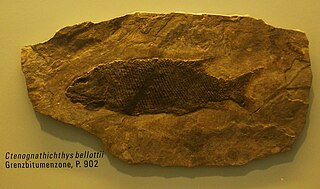
Ctenognathichthys is an extinct genus of prehistoric bony fish that lived during the Anisian and Ladinian ages of the Middle Triassic epoch in what is now southern/southeastern Switzerland and northern Italy.
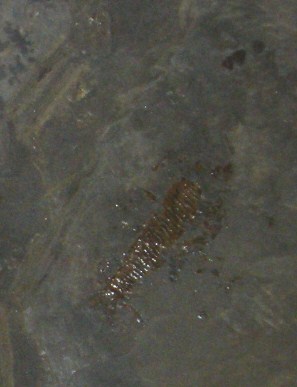
Habroichthys is an extinct genus of prehistoric bony fish that lived during the early Ladinian stage of the Middle Triassic epoch, 242 to 232 million years ago. It has been found in Austria, China, Italy, Slovenia, and Switzerland. It was a small fish measuring 26 cm (10 in) long.

Bobasatrania is an extinct genus of prehistoric bony fish that survived the Permian-Triassic extinction event. Fossils of Bobasatrania were found in beds of Changhsingian to Ladinian age. It was most speciose during the Early Triassic.

Boreosomus is an extinct genus of Triassic ray-finned fish. It was first described from the Arctic island of Spitsbergen, but was later also discovered in other parts of the world. The type species is Boreosomus arcticus.
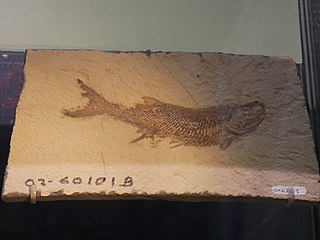
Cyranorhis is an extinct genus of prehistoric bony fish that lived during the Serpukhovian age of the Carboniferous period in what is now Montana, United States.

Ptycholepis is an extinct genus of prehistoric ray-finned fish having the head and opercular bones ornamented with ridges of ganoin, minute teeth, and thick scales.
Platysiagum is an extinct genus of prehistoric bony fish belonging to the family Platysiagidae. Fossils are known from the Middle Triassic of China, Italy and Switzerland, and the Early Jurassic of England.
Turseodus is an extinct genus of ray-finned fish found in Late Triassic freshwater sediments of the United States. Two species have been described, T. acutus from the Lockatong Formation of Pennsylvania, and T. dolorensis from the Chinle Formation of Colorado.









